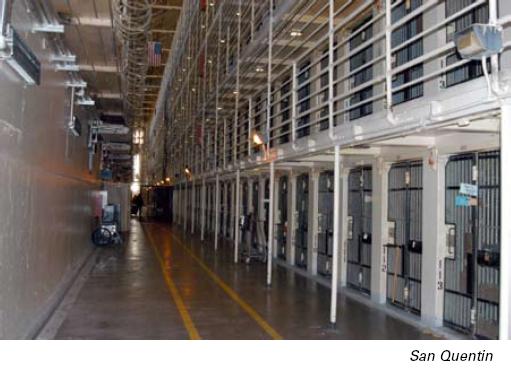Prop 5: Nonviolent Offender Rehabilitation
Proposition 5 would provide much-needed reforms to the state’s criminal justice and drug rehabilitation systems. An expansion of Prop 36, the 2000 initiative that established a drug treatment diversion program for nonviolent drug offenders, Prop. 5 would funnel more money into that program. It would also refine sentencing and parole guidelines.
Instead of wasting taxpayers’ money on incarceration and excessive parole sentencing, Prop. 5 establishes a three-track system that takes into account offenders’ criminal, substance abuse and treatment histories. The initiative also drops possession of less than 1 ounce of marijuana from a misdemeanor to an infraction (like a speeding ticket) and directs the $100 fine from the infraction to fund drug treatment programs for juvenile substance abusers.
Additional reforms include expanded treatment for juvenile drug offenders and oversight committees to track the effectiveness of the programs.
Due to savings from decreased incarceration and parole costs, plus the money saved from decreasing the need to build more prisons, the net cost of the $460 million-per-year-program would be neutral.
The cycles of substance abuse and criminal recidivism can only be broken through realistic, comprehensive drug treatment programs that emphasize rehabilitation and make incarceration the very last resort. Prop. 5 is a vital piece of the vast reform needed in our state’s broken criminal justice system.
Prop 6 Police and Law Enforcement Funding
State Proposition 6—fundamentally a lock-‘em-up initiative originated by married SoCal state representatives George and Sharon Runner—has won the endorsements of numerous police and sheriff’s organizations. Given spreading statewide gang problems, which it’s designed to address, we can see why.
But the proposed law, informally known as “The Safe Neighborhoods Act,” has a serious economic—not to mention moral—downside.
Prop. 6 will add up to 10 years to the prison sentences of previously convicted felons who are caught carrying weapons, as well as gang offenders picked up for violent crimes. It also adds five years’ annual registration for gang members following prison discharge and increased sentences for meth makers and dealers and witness tamperers.
Perhaps proving that its sponsors are hard-core law ‘n’ order zealots, Prop. 6’s draconian language applies to repeat graffiti violators. In addition to being Neanderthal in its approach to crime-prevention, the proposal is a budget-buster. The state budget analyst’s office calculates its immediate costs at $365 million a year ($465 million a year in 2013) and points out that it will require, over time, prison construction and upgrade costs of an additional $500 million.
Deeper questions exist about the very root of the program; namely, the practice of authorities’ assigning “gang enhancements” to youth offences, thus increasing sentences. Mistakes have frequently been made, and once law enforcement personnel have labeled someone a gang member, it’s virtually impossible for that person to get off the list.
Several state labor unions and taxpayers’ groups, and even firefighters’ groups, have stated opposition to Proposition 6.


Prop 5: People making a consious decision to break the law, regardless of what that law is, deserve to face the consequences. I am sure that everyone caught has a sob story about how the system is unfair or how they were dealt a crap hand in life. The fact remains that people make their own decisions based on free will, and there are consequences for those decisions. I have no interest in the state sponsoring feel-good therapy sessions for weak-minded drug addicts looking for a free pass or a handout. Furthermore, the cost estimate is not neutral as you suggest. Recidivisim rates for addicts are significant, and would cost local, county and state police and corrections officials time, money and resources to re-arrest these crack bunnies caught looking for their next score.
Prop 6: Previously convicted felons have no business carrying guns. Period. End of statement. There should be no debate about this. The poor little repeat offender graffiti artist should recieve no sympathy either. If you repeatedly show no respect or care for society’s laws, why should society afford you any of its benefits? I question any repeat offender’s character, judgement and values and see little societal benefit to such individuals walking the streets.
Coddling criminals may be ok for the writer of this blog, but I hope there are enough people out there who care more for the saftey of their community than for the poor unfortunate criminal who took a turn to crime because his mommy left him, his daddy was a drunk or whatever other garbage excuse comes out of the trash.
It’s easy to say “lock ‘em up” when you’re playing with Monopoly money.
#1- Crime = Time,
You make some very excellent points. Having worked in the Victim Offender Program for 5 plus years, I would like to see some money go into helping the victims of these criminals. If you knew how badly victims are treated by our system, and how few actually receive court ordered restitution, it would hasten your decision to support any proposition that holds repeat offenders accountable and would, “lock them up!”
There are no “free” services to help victims with long term therapy/counseling, nor are there very many support groups, or monies to help victims recover financial loses due to crimes. The very few programs that help victims recover medical bills, require an immense amount of red tape, and documentation.
When are we going to start putting the rights of crime victims FIRST, and criminal’s rights SECOND?
just get rid of everyone on death row they shouldnt be there anyway they got the death penalty that is what they should get why should we pay all these millions of dollars for them to be there they should oflost all there rights when they are convicted of a crime not for them to get more rights then us on the out side of prison we r to nice to the inmates when we shouldnt be